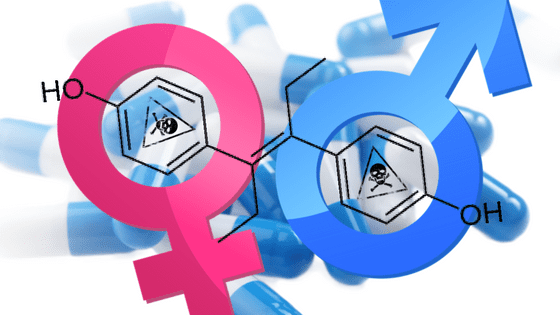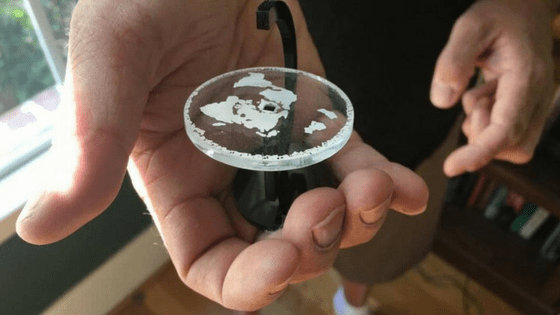Was your mom wowed by the DES anti-miscarriage drug commercials? It may have actually caused transgenderism.

Firstly, a brief introduction to the term “transgender:”
Transgender individuals identify their current gender as different from their sex as it was assessed at birth — and as it was recorded on their birth certificate.
Some boys transition to a female gender identity as early as three years-of-age, and vice-versa. They are referred to as MTF (Male to Female) or FTM (Female to Male) transgender individuals.
A few identify as having a variable gender — that is, they switch their identity between male and female from time to time.
Finally, a small percentage identify as non-binary: neither male nor female; to them, gender is personally not a meaningful term.
In contrast, about 99.4% of adults identify their gender as the same as their birth-identified biological sex; they are referred to as “cisgender.”
Many transgender persons change their first name to one that corresponds to their current gender identity. They prefer that other people use these new names and appropriate personal pronouns: she, her, he, his, etc. Most religious liberals, secular humanists, etc. accommodate these preferences of their trans friends and acquaintances.
A transgender identity can be expressed by a child as young as three years-of-age. Many of them transition back before reaching adulthood. But, for some, their gender identity is permanent.
There are two common explanations for this phenomenon:
- Many religious conservatives describe transgender persons as being simply “gender confused.” They typically identify a transgender person by their birth-identified sex, and use the person’s birth name and corresponding personal pronouns. They suggest that transgender persons be “cured” through prayer, counselling, and/or therapy. When the U.S. Supreme Court legalized same-sex marriage in mid-2015, much of the focus of conservative religious and other groups switched from preventing equality for homosexuals and bisexuals to preventing transgender individuals from asserting their gender identity.
- Some researchers have been studying the brains of MTF and FTM trans men and women using Magnetic Resonance Imaging (MRI) and other measuring techniques. They have found that transgender persons have internal structures between their brain’s two hemispheres that match their current identified gender, not their birth-identified sex. Other researchers test the reactions of transgender persons’ brains to chemicals and sounds. They also find that their brains’ reactions match those of cisgender persons who share their gender identity. So, when a trans person refers to themselves as having “a female brain in a male body,” or vice-versa, their statement is factually true.
The precise cause of gender transition is unknown. However current research into gender identity and sexual orientation point towards processes before birth as being responsible.
A persons biological sex is determined during the conception process when an ovum is fertilized by one very lucky spermatozoon, and a zygote is produced normally with either an XY sex chromosome pair for a male, or XX pair for a female.
The bodies of all embryos start off as female. However, embryos that are biological males generally produce hormones that change their appearance to male. Thus, an ultrasound test on a ten-week-old embryo can often tell whether she or he is a biologically female or male.
In contrast, major neuron development in the brain of the fetus starts much later in pregnancy, in the middle of the second trimester.
Thus, during pregnancy, there are some processes early on that determine a person’s biological sex and their anatomical design.
However, the processes that develop the brain occur much later, in the second and third trimester. This introduces the possibility that some processes at different times during pregnancy can result in the birth of a new-born with a male body and a female brain or vice versa.
Much research will be needed to identify the processes involved.
One possible cause of transgender identity
Diethylstilbestrol (DES) was first synthesized in 1938. It was a medication that was first used in treatment of breast cancers.
Starting about 1940, physicians started prescribing DES in the belief that it would reduce miscarriages and other complications during pregnancy.
It also had many other uses.
In 1971, it was found that DES sometimes created a rare vaginal tumor called “clear cell carcinoma” — not in the women who took the medication, but in girls and women who had been exposed to Diethylstilbestrol years earlier while they were in their mothers’ wombs, when they were embryos and fetuses.
DES was also found to increase the rate of breast cancers in women who took the drug.
The U.S. Food and Drug Administration quickly removed its approval for use in pregnant women that year.
Children of women who took Diethylstilbestrol during their pregnancy are often called “DES daughters” and “DES sons.”
DES daughters have a higher rate of abnormalities of their reproductive tract, some forms of cancer, and are at a higher risk of pregnancy complications.
DES sons have a higher rate of testicular cancer, infertility and urogenital abnormalities.
There is also a strong suspicion by many researchers that exposure to DES before birth might cause transgender identity.
Wikipedia reports that:
“Dr. Scott Kerlin, a major Diethylstilbestrol research scientist and founder of the DES Sons International Research Network in 1996, has documented for the past 20 years a high prevalence of individuals with confirmed prenatal DES exposure who self-identify as male-to-female transsexual, transgender, or have intersex conditions, and many individuals who report a history of experiencing difficulties with gender dysphoria.
Gender dysphoria refers to feelings of intense distress caused by a conflict between a person’s current gender identity and the biological sex with which they were identified at birth.
DES Action USA is a non-profit membership agency that was organized in 1977 to support “… all individuals exposed to DES, their families and health care providers.” Their web site’s section on DES Sons states:
“Questions have been routinely raised in the DES community regarding the possibility that prenatal DES exposure may be linked to increased rates for homosexuality, transgender and transsexual conditions. Animal studies point in that direction yet, so far, no evidenced-based research in human populations has been able to confirm it.”
An anonymous woman who goes by the pseudonym “DES Daughter” has an impressive Facebook group, personal journal and an extensive list of links to “Diethylstilbestrol DES and Epigenetic Studies” during the interval 1977 to 2017.
The question of a link between DES and the cause(s) of transgender identity won’t be settled until an extensive, peer reviewed study is conducted.
Until then, we have only speculation.
Unfortunately, the people most concerned about this link are the transgender community, which has limited financial resources to fund such a study.
While under Republican control, the federal government cannot be expected to fund an expensive study to thoroughly research the link. Funds are unlikely to come from the Pharmaceutical industry either, because if a link is found, many transgender persons might be motivated to sue the companies that manufactured DES.
It might take some time before some group steps forward with funding for this cause.
References
Wikipedia. 2018. Diethylstilbestrol.
DES Action USA. 2014. About Us.
DES Action USA. 2014. DES Sons.
Diethylstilbestrol DES and Gender Identity Studies.
Journal of a DES Daughter. Facebook. DES Daughter.
Journal of a DES Daughter. 2016. Diethylstilbestrol DES and Gender Identity Studies.
The views presented on this blog are an extension of those presented on the Religious Tolerance website. The purpose of all articles is to compare the full range of beliefs and actions by people who are members of various faith groups within Christianity and other world religions, individuals who are NOT Affiliated with a faith group (NOTAs), and secularists.















